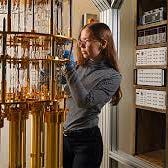Artificial intelligence Is Outperforming Astronomers to find Earth like Planets
AI is good at Math
Hey Guys,
Join 3,500 others as I talk about A.I. at the intersection of news, technology and business. AiSupremacy is the sister Newsletter of my exploration of Quantum Computing called Quantum Foundry. This is emerging as my second most active Newsletter on Substack.
Personal
Thanks to everyone who showed their support in this tough time, my Mom passed…
Keep reading with a 7-day free trial
Subscribe to AI Supremacy to keep reading this post and get 7 days of free access to the full post archives.




